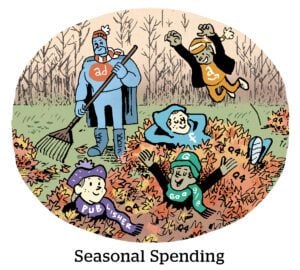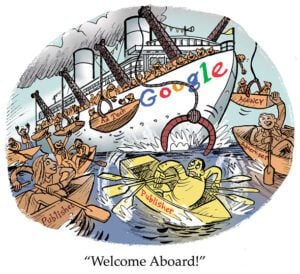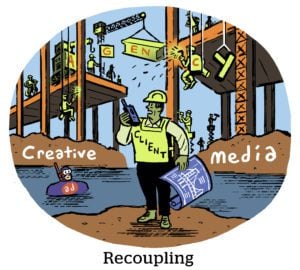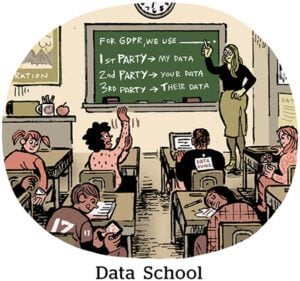Imagine this: It’s league night, and the top bowler wins a $1 million check.
You bowl a great game, including a turkey! Based on your final score, you excitedly walk to the podium, already mentally spending your winnings. To your surprise, the judge says, “We’re actually judging this contest by the ball’s optimal position when it is halfway down the lane.” Huh?
Aiming for one thing and being measured against another is absurd. But this is how the multibillion-dollar TV industry has operated for decades. You aim for one thing (a brand’s unique target audience) but are judged by a high-level age/gender breakdown instead.
Media buyers have adapted their techniques to account for this absurdity. Essentially, they’re aiming for a point midway down the lane rather than for the pins themselves. And despite advancements in ad tech, the industry still clings to outdated methods.
Yesterday’s excuses don’t hold water
In recent years, TV measurement has leveled up its capabilities, including developments in viewership data sources, like automated content recognition (ACR) and continuing advancements in TV attribution, like the recent announcement of fullthrottle.ai. Even identity has become a hot-button topic, with a buffet of interoperable ID choices to solve for extreme viewer fragmentation.
Attribution is certainly the goal. But for long sales cycles and branding strategies, buyers need to know whether they’re reaching the right eyeballs.
And while traditional demo-based measurement has been our currency for decades, the question of viewership is no longer a simple one to solve. Viewers continue to fragment – by platform, device and content type – causing the lines to blur between digital and TV. So the industry needs a variety of currencies to support new expectations.
Many buyers are taking a glass-half-full approach, looking at fragmentation as an opportunity to deliver customized video experiences. There’s no longer a need for broad decisions to questions like “What’s the one most effective ad for my entire diverse audience?”
This openness to customization extends to measurement, a better understanding of campaign frequency and engagement and even post-ad actions by unique subsegments of an advertiser’s target audiences.
Like-minded sellers see how these customized approaches can help them maximize yield, all while delivering better outcomes for their buyers. Everyone wins!
The downside of BYOD
The table is set for amazing data-driven TV buying. However, there’s another stumbling block to overcome: Buyers are using multiple platforms to target and measure their cross-screen TV strategy. And those platforms are all using their own conflicting data sets.
Let’s revisit league night. After many complaints, the bowling tournament leaders agreed the winner should be determined by who knocks down the most pins. But not everyone agrees on which 10 pins you’re aiming at. The league’s systems rely on different data and see seven of the same pins you do, but also three pins you don’t.
Similarly, using different data sets for targeting and measurement introduces unnecessary complexity. It’s unnecessary because using the same data from beginning to end is entirely possible. Permitting media platforms to target and measure based on the data of their choosing is inviting bias into your strategy.
Getting aligned around measurement
If “sell-side bowlers” could get their hands on the data set used for judging the tournament, they’d have a better shot at walking home with the $1 million. By adopting the same data set, competitors can avoid hitting the pins that don’t contribute to their score (aka media waste).
The opportunity to showcase media’s or tech’s value is tied to targeting and measuring the same audience as buyers.
Upgraded access to data, like the expanded clean-room integrations touted by Disney at CES, are attractive to progressive buyers. This is because consistent audiences make it possible to see which media and platforms are truly the best-performing.
Better TV measurement in 2024
The days of one single currency or a single common data set for all campaigns and strategies are long gone. Making TV measurement smarter has been an industry resolution for decades, but 2024 has all the right pieces in place for significant progress.
TV strategists are carefully crafting specific targets using data and AI upgrades to meet their brand objectives. There is no reason a marketer’s exact target audience shouldn’t be used throughout the targeting and measurement process, confirming success or failure in the end.
A strike is a strike. We should all agree on that.
“On TV & Video” is a column exploring opportunities and challenges in advanced TV and video.
Follow Blinc and AdExchanger on LinkedIn.
For more articles featuring Lindsey Harju, click here.



















